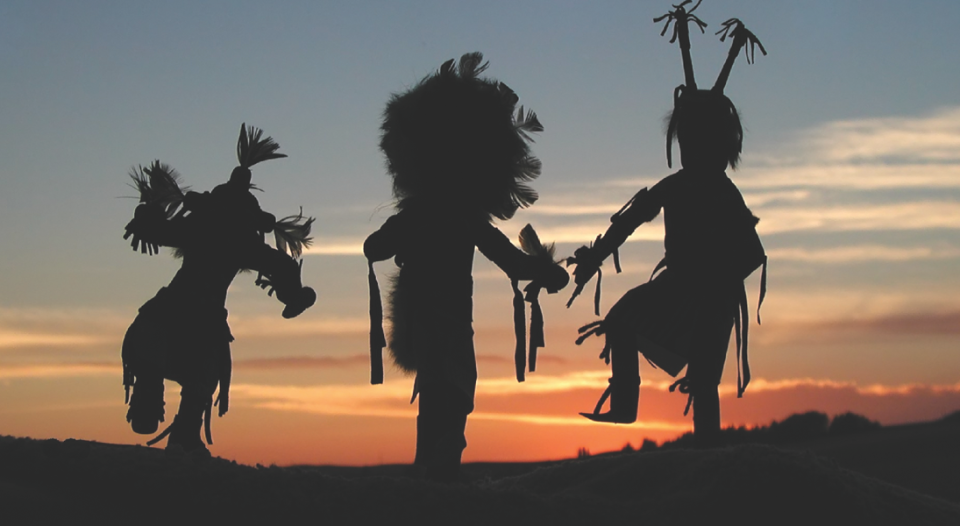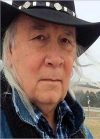Editor’s note: This modified excerpt from Steven Charleston’s We Survived the End of the World: Lessons From Native America on Apocalypse and Hope (Broadleaf Books, 2023) is reprinted with permission.
The Native Hopi tradition, along with that of all Indigenous people, is living proof that human beings can live in a loving relationship with the earth. The benefits of that balanced relationship are clear. The earth can provide enough for all to share. Environmental apocalypse can be averted. A healthier planet can be achieved if we have the will to work together as people with a common Mother. Although it has been eclipsed and devalued, the Indigenous alternative is still here, still existing beneath the shadow of colonialism. Greed has not yet won the day. There is still time if we act now and if we act as one family.
But how do we become that family? That is the question, because the forces of exploitation have left us shattered and suspicious. We are divided by racism and classism. We are pitted against one another as the chasm between the haves and have-nots grows wider. The politics of fear drives us into the bunkers of our opinions, trading the truth of our shared reality for the imaginary safety of our isolation. Given the depth of that social oppression, what can we do to overcome it?
We can start dancing.
Wovoka, the Paiute prophet of the Ghost Dance movement, raised the apocalyptic question of the afterlife: Who is going to get to go to heaven? In other words, in his vision of a restored Mother, a world of enough to share for everyone, who would the “everyones” be?
The missing piece of the puzzle for Native America is reconciliation with the very people who stole their land and tried to exterminate them.
Over the centuries religions have answered the question of who gets to go to heaven in a wide variety of ways. Very often the answer has been exclusionary. Only the followers of this faith or that faith will make it. All the others will perish. The apocalypse in the last book of the Bible is a powerful example of this kind of gatekeeper faith. It emerges from a history of apocalypse where survival was uncertain. The persecution of early Christians drove the religion underground, just as the persecution of the Ghost Dance drove Native believers underground.
The difference, however, is that Christian theology responded by becoming more exclusive, while Indigenous theology became more inclusive.
According to his original vision, Wovoka, also known as Jack Wilson, saw white people and people of all other races in the postapocalyptic world. In other words, he saw a future reconciliation with the settlers. Given the history between the two cultures, this vision is as startling as if the author of the book of Revelation had pictured the Christian martyrs enjoying the afterlife with the people who threw them to the lions.
It is a huge step toward reconciliation and, like the book of Revelation, it has a long history behind it. The theological assumption behind both Wovoka and the Hopi is that human beings are created equal and that we need one another to be whole. The missing piece of the puzzle for Native America is reconciliation with the very people who stole their land and tried to exterminate them. By any stretch of the spiritual imagination, that is an astonishing thing to do.
The original language of hope
Reconciliation is not for the fainthearted. In fact, it is such a daunting assignment that very few may believe it is actually possible. And yet, it is only one of many other historical apocalypses that have torn people apart, all of which need reconciliation.
The Spanish conquistadores looked at the Hopi with derision when they were welcomed as the long lost siblings of an ancient story. They could not comprehend a worldview that would make them equal to the people they wanted to conquer. And yet according to the Hopi vision, the apocalypse of our suffering will not stop until we are all reunited as one family. As impossible as it seems, our task is to become Ghost Dancers because we share in Wovoka’s vision: we believe reconciliation is possible. No matter how incredible, no matter how painful, we believe it can happen.
The key is in the dance. The strange dance with no music.
Ghost Dancers dance in silence. … The rhythm comes from within. In the silence we are the same.
Ghost Dancers dance in silence. The only sound is the movement of their feet and the chant they share as an appeal to heaven. In other words, the dancers have to make their own music. The rhythm comes from within. In the silence we are the same. Imagine a circle of human beings, brought together from different cultures, silent except for one song they can sing together. No arguments, no denials, no justifications. No politics, no religion, no philosophy. Only what they can sing together, the same song that their hearts already know.
This ancient song is the one the Hopi understood as the one we shared before human beings separated to follow their own paths of migration around the world. The original language of human hope: the need for food, for shelter, for love. These ancient needs are the same in every culture. They are the memory of what we first valued. Family, children, safety, death in the company of those we love. The Hopi are memory bearers for humanity. They tell us what our ancestors—all of our ancestors, not just a select few—once understood. In carrying out the Ghost Dance we are reconnecting with those ancestors, the “ghosts” of our common past, gone but not forgotten.
To learn about the ELCA’s Truth and Healing Movement, visit elca.org/indigenous.






